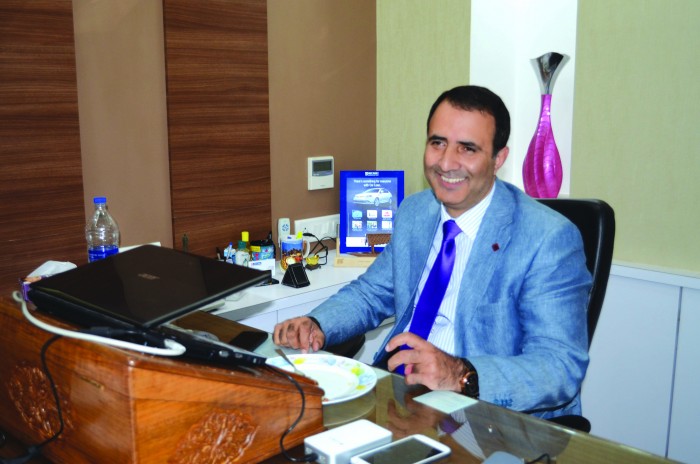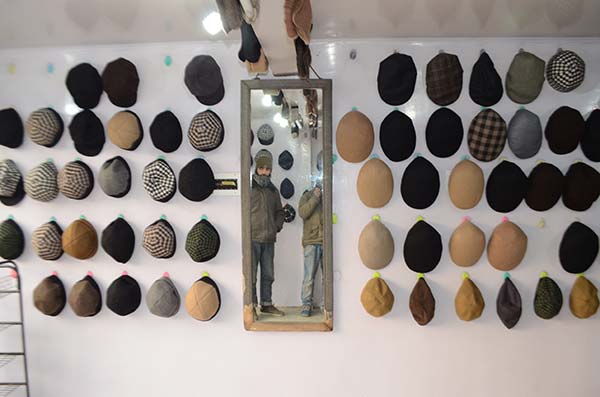As improved situation restored their confidence, second generation banks entered J&K quite recently. Within shortest possible time, they accelerated competition, created their own space, are making money and keeping the state tuned to the modern banking that has IT at its core, reports R S Gull

“For three months he was almost chasing a PSU bank for a loan of substantial sum,” Iftikhar Ahmad, one of the six cluster heads of the HDFC Bank in J&K said. He was talking about a Kargil resident who had to repair his home but was caught in a time warp. Arid Ladakh desert has limited working period, much less than Kashmir and the people firm up their resources and finish the jobs in peak summer that lasts less than half of the year. Somehow he got the information about HDFC Bank offering a loan in 10 seconds. “For him, it was unthinkable but he was desperate enough to try it and he tried. When I met him later, he was shocked more than being surprised because he had never thought that banks could operate like this – we sanctioned the loan and the money got deposited in his account in four seconds flat.”
That is just a glimpse of the operations that second generation banks are introducing in J&K. “By now, we have already approved almost 1000 loans of varied sizes under ‘a loan in 10 seconds scheme’,” informed Sr. HDFC Bank’s Vice President, Zubair Iqbal, the man who spearheaded the bank’s entry in J&K in 2004. The bank that marked the entry of gen-second financial institutions in the state has already 73 branches, a 201-ATM-network, a deposits vault of Rs 1816 crore and a surging loan book currently at Rs 1044 crore. “We fully understand the potential of the market and we design processes to come to the expectations of the customer.”
Zubair’s brief talk was interrupted by noise outside his chamber. It was a cake-cutting ceremony as the bank had crossed the psychological barrier of Rs 200 crore advances in agriculture. “It is all apple,” explains Gagandeep Kumar, who oversees bank’s agriculture operations in J&K. “Almost Rs 190 crore is directly advanced to the apple growers and the numbers are growing as we have improved our agriculture base from 800 account holders to 2400, in just a quarter.”
With 57 percent CD ratio, 53 percent credit off-take in priority sector and agriculture getting 19 percent, Zubair says they can play with the rates. “Our 50 percent CASA ratio gives us a cushion to reduce the interest rate, in fact it has already been lowered to 9.35 percent,” Zubair said. “Our default in agriculture sector is a negligible 0.5 percent which encourages us to work more in the sector.” The bank lays emphasis on its operations down-south and north too. It exists in Shopian, Kulgam, Sopore, and Baramulla – that makes most of India’s apple basket, an Rs 4500 crore economy a year.
The bank says they revisit their policies on year on year basis. Till recently, they would provide loans to growers having eight kanals (eight kanals make an acre) of land. Now the landholding eligibility has been reduced by a half.
But that is just one part of the HDFC’s J&K operations. With a strong IT platform at its back, the second generation banks, especially the HDFC Bank are quick to pick any new technology to impress their clientele. HDFC has tied up with most of the air-ticketing portals and e-commerce retailers to manage discounts for its card holders. “The newest in our kitty is Chillr and PayZapp,” Zubair said. While the former helps the application users to transfer instant money free of cost up to Rs 50,000, the latter improves the use of credit card experience.
Cards, both debit and credit, are at the core of its focus. The bank has 2,06,000 debit and 35,000 credit cards and over the years it has installed more than 2,000 PoS machines – 1300 in Kashmir alone. “Last year, we issued 40,000 cards,” Zubair says. Market sources suggest that HDFC issued cards trigger a monthly business of around Rs 35 crore as its POS machine transactions have a monthly turnover of Rs 42.70 crore.
Though it may take some more time for HDFC’s entire J&K network to get into profit making, third party products continue to be its key source for non-interest income. Marketing of insurance and mutual bond apart, HDFC was the first bank to sell gold and introduce gold loans. From one branch a few year back, the facility is now extended to 15 branches – nine of them in Kashmir. “We hold 200 kgs of gold in our vaults,” Zubair said. “Right now we have outstanding advances worth Rs 41.10 crore in this portfolio alone.”
Given the fact that all its branches are Forex shops, it makes its bit of the Hajj pie, every year. “We started with selling five lakh Saudi Riyals a year two years back and this year we sold two million riyals.” Every Mecca pilgrim requires a minimum of 3000 Saudi Riyals and J&K sends an average of 8000 Muslims to the yearly pilgrimage, excluding a few thousand more who take private route to Hajj and to Iraq and Iran.
While HDFC bank might be in competition with the biggies like J&K bank, SBI and PNB, it is gradually facing its own competition. ICICI Bank entered J&K in 2005 and Axis followed in 2009. They also have IT as their core cushion and the entire banking is centralized.
“For us, J&K is a virgin market and off the metros we see places like J&K as the main expansion courtyard,” Shabir Ahmad of Axis Bank said. “It is emerging but still under-serviced.”
Shabir says the response they are getting is impressive. They have tied up with most of the e-commerce portals, ticketing companies and use all the new applications to address the new-age client. “To be honest, we do not see much of the competition and even in competition with HDFC we do have more flexibility of rate-management.” It already has 55000 account holders and has installed more than 150 PoS machines. It claims 66 percent CASA ratio in its deposits and says its advances will improve substantially as they are getting deeper into apple belt. “We have Rs 25 crore exposure in Sopore alone,” Shabir said.
But a general impression is that the second generation banks are raising deposits in Kashmir and are unsure of its deployment in the valley. HDFC says they lend everywhere across the state. A top official of the ICICI bank said it is mere propaganda. “CD ratio has become an issue but nobody knows that if we add up our corporate advances in the state to various works under progress, our CD ratio shoots up to 122 percent,” the official not authorized to speak on record said.
ICICI bank that followed HDFC bank into the state is gradually expanding. “We have gold loan and no frills auto loan which keep us ahead of others,” the official said. “We have better e-platforms and we are constantly revising strategies to offer customized services.”
There is one issue, however, which is making the entire second-generation group to be almost unanimous – the government business. “State governments have every right to protect the institutions they own but for some level playing field the policymakers will have to open a small window and offer part of the pie,” Zubair said. “They can have their own parameters as other states have done. They can given us access to funds if, for instance, we have to reach a particular benchmark in branch network or CD ratio. Let them fix it, we will keep it a target.”
They say the non-local banks equally contribute in the socio-economic development in the state. “If we are managing slightly one-third of the sector by way of jobs and credit without any access to government funds, we have the potential of improving once government opens its wallet for us,” commented a middle rung banking executive in a private bank. “At the end of the day, it takes two to tango.”
2nd Generation Banks: An Overview
| Bank | Entry | Branches | Staff | Deposits | Advances | CD ratio |
| (Year) | (No) | (No) | (Rs Cr) | (Rs Cr) | (percent) | |
| HDFC Bank | 2003 | 73 | 1000 | 1910.56 | 1043.76 | 54.63 |
| ICICI Bank | 2004 | 35 | 462.94 | 195.05 | 42.13 | |
| Axis Bank | 2009 | 23 | 210 | 472.97 | 129.56 | 27.39 |
| Yes Bank | 2010 | 7 | 314.55 | 5.31 | 1.69 | |
| IndusInd Bank | 3 | 80.33 | 35.39 | 44.06 | ||
| Kotak Mahindra Bank | 2014 | 2 | 40.5 | 0.31 | 0.77 | |
| 143 | 3281.85 | 1409.38 | 42.94 | |||
| Note: Business figures of June 2015 | ||||||















